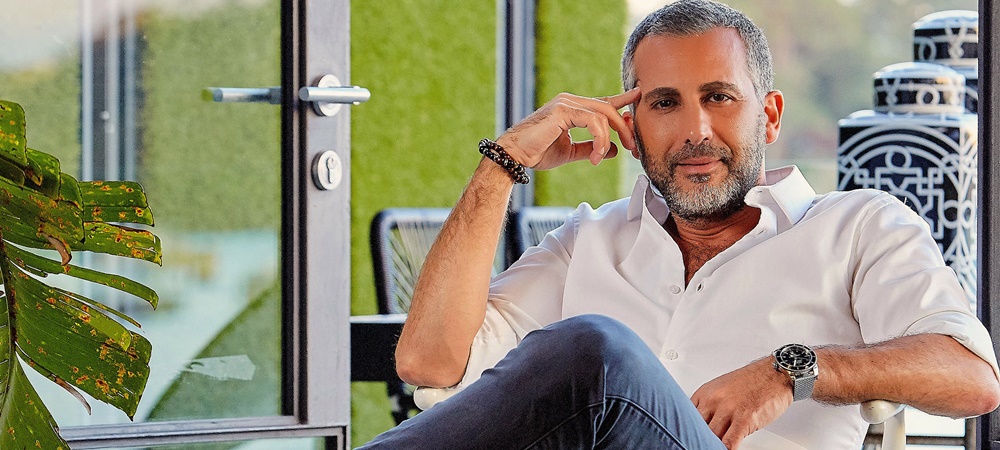With no higher education, no family fortune and armed only with a burning desire to succeed, Dorry Kordahi went from a suburban hairdresser to being named on BRW’s Young Rich List.
Here, the managing director and co-founder of promotional merchandise and corporate clothing company DKM Blue shares what he has learnt along the way.
Expanding your brand is about creating a series of outstanding and exciting touchpoints that stimulate your target customers’ senses. Contemporary shopping is increasingly experiential, not tactile like it is in traditional bricks-and-mortar retailing.
When we first founded DKM Blue, we focused on the simple principle of delivering quality products at the correct price. Now a multi-million dollar company, its numerous brands service a wide variety of markets. From promotional merchandise to corporate clothing and accessories and fashion, each one is primarily marketed via numerous, exclusive ecommerce platforms. Although each occupies a very different market area, they all follow the same founding principle, which is vital to their success.
A good working example of sticking to these principles is our newly acquired Ecto Handplanes brand, which I discovered on a recent episode of Shark Tank. Shortly after I decided to reach out to its founder, Chris Anderson, with a view to taking it from a tiny, niche brand, to a mainstream one.
Kordahi discovered the surf brand on an episode of Shark Tank.
Essentially, this meant investing in the back end of the brand first. There is no point in promoting a brand of whatever nature if you can’t deliver the actual product. To do so is disastrous for any brand, let alone an emerging one.
What my group has, apart from funding and experience, is a well-established, smooth running supply chain that I am proud to say can produce virtually any sort of product.
So, having brought Ecto Handplanes into our stable, I have concentrated on refining how the product is made in order to expand its appeal.
Moving production to a professional, quality assured model has achieved three major objectives:
- Product quality has improved.
- Unit cost has reduced.
- Production capacity has increased.
Doing this has opened channels of retail distribution that had previously been closed to the brand.
Choosing the correct channels
However, having the ability to expand a brand is only the first part of the equation. The next and equally vital one is choosing the correct channels, the ones that will maximise your ROI.
Around the world, the middle market for most consumer brands has been badly mauled and what remains is perilously unstable, while entering the price sensitive bottom-end, mass market requires an infrastructure and treasury that is on a global scale—nobody is going to create another Walmart overnight.
The high-end world of luxury goods requires equally deep pockets, highly specialised knowledge and personnel, and nerves of steel. Here, customers are a handful of super wealthy people scattered around the globe, for whom cost is irrelevant but exclusivity vital.
An example of servicing such a market is the popular car manufacturer Ferrari, which turns over about US$4 billion, yet restricts its output to just 8,000 units annually (and consequently its turnover). Why? Because desirability decreases as availability increases. So the skill here is about balancing supply and demand.
Specialise and you can capitalise
So what, you might ask, is left?
Niche, niche, niche. Specialise and you can capitalise. To do this you need more than just a good idea. You need to project the image and feel of your brand at every stage of the retail cycle. The days of filling a window display and hoping for the best disappeared long ago.
You need to know and understand your target demographic better than they do. Where they live, work, eat and drink. What their education and disposable income is and, vitally, what percentage of that income they are willing to forego to buy your product. Depending on the price of your offering, you could be competing with anything from a cup of coffee or music download to a new mobile.
A simple analogy is the old economic measure of ‘how much does a loaf of bread cost?’ Except niche marketing takes the question a step further. It shifts the basis of cost to motivation. What will motivate the consumer to buy an artisan loaf that can cost more than three times that of a standard white sliced? The answer is simple: the artisan loaf appeals to the aspirational, affordable market, which can also be called the ‘attainable luxury niche market’, while the white sliced is the sole province of the Walmarts of this world.
Furthermore, the experience of shopping for your brand must be exciting, faultless and seamless. Our Ecto customers may be buying a surf product they imagine using in Hawaii, but are probably shopping while on a bus or train going to work in a major city. So, when they shop, they need to live the brand experience, not just look at a product.
Customers want to place their order and have it delivered quickly with minimal interaction or fuss. Too much of either will result in them simply giving up or going elsewhere.
 Dorry Kordahi is the managing director and co-founder and DKM Blue. His latest book, Win Big Risk Small, is out now.
Dorry Kordahi is the managing director and co-founder and DKM Blue. His latest book, Win Big Risk Small, is out now.
Want the latest retail news delivered straight to your inbox? Click here to sign up to the weekly retailbiz newsletter.

